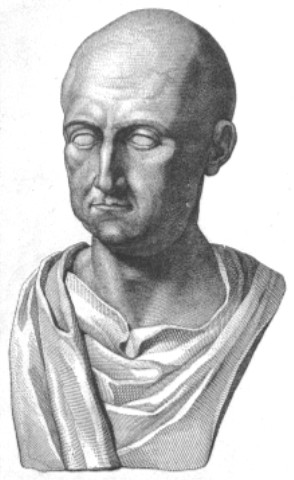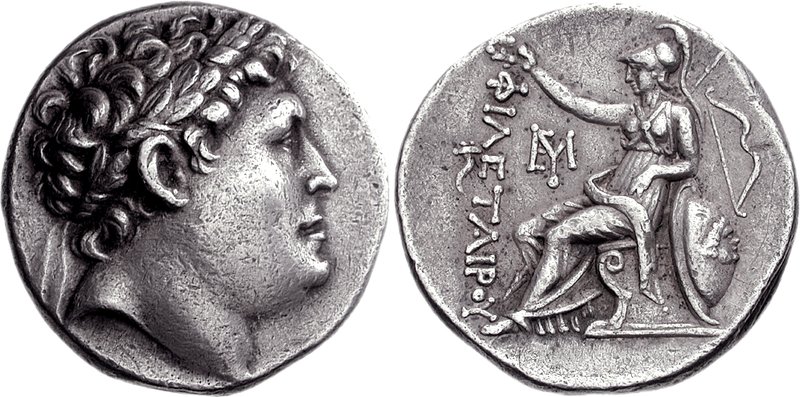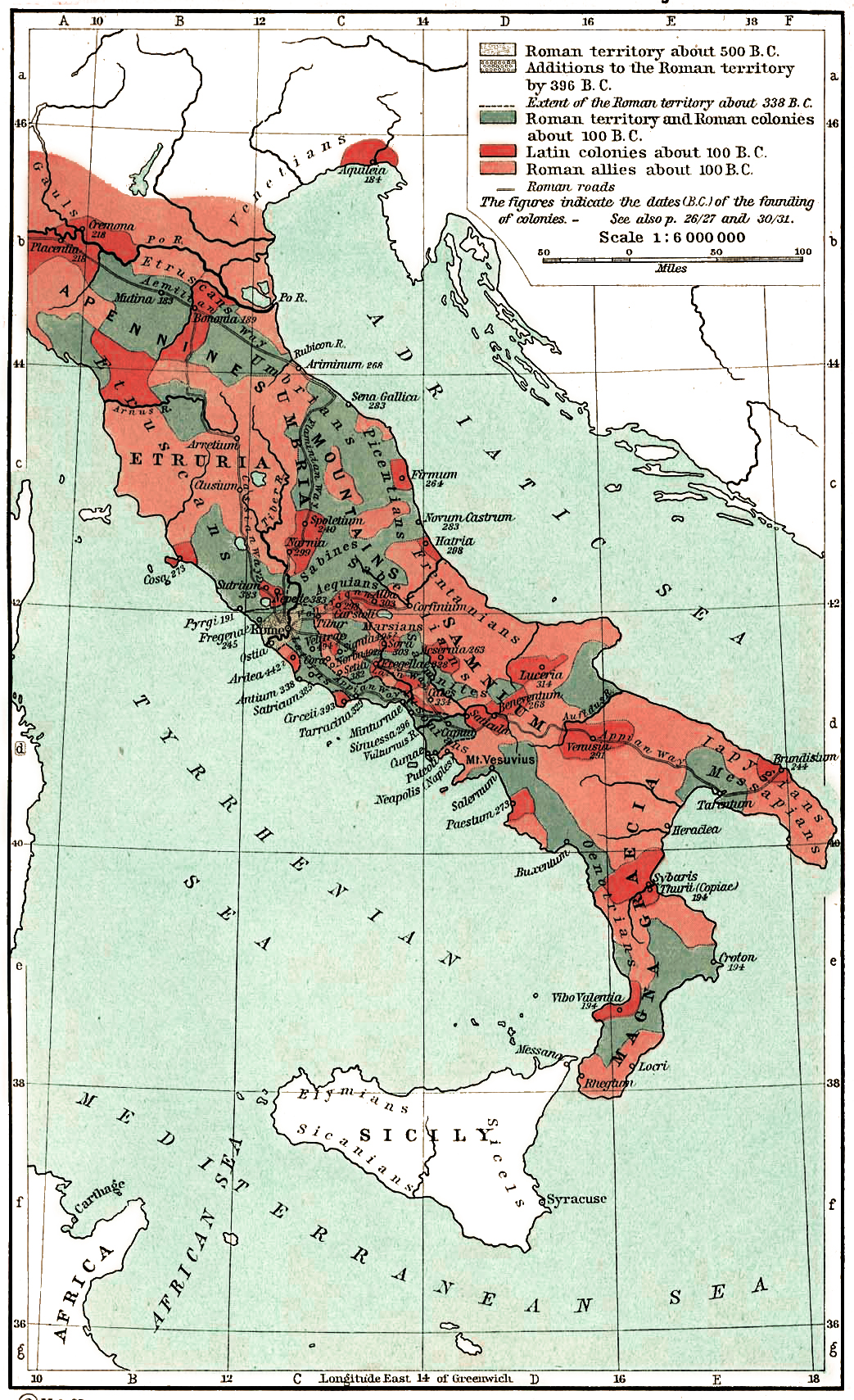|
Publius Sulpicius Galba Maximus
Publius Sulpicius Galba Maximus (fl. late 3rd to early 2nd century BC) was a Roman military officer and Senator who was elected Roman consul twice, and appointed dictator once. He fought in the Second Punic War and the First and Second Macedonian Wars. First consulship and the First Macedonian War A member of the Patrician '' gens Sulpicia'', Sulpicius Galba was the son of Servius Sulpicius Galba. Although he had held no previous curule magistracy, the crisis of the Second Punic War saw him elected consul in 211 BC, alongside Gnaeus Fulvius Centumalus Maximus. Entering his office on the Ides of March, both consuls defended the city of Rome against a surprise attack by the Carthaginian general Hannibal. Once the immediate crisis abated, and Hannibal retreated back to the south of Italy, provinces were allotted to the consuls. Although both were assigned to Apulia, the Senate, believing that Hannibal no longer posed a grave threat, decreed that one of the consuls only should rem ... [...More Info...] [...Related Items...] OR: [Wikipedia] [Google] [Baidu] |
Roman Republic
The Roman Republic ( la, Res publica Romana ) was a form of government of Rome and the era of the classical Roman civilization when it was run through public representation of the Roman people. Beginning with the overthrow of the Roman Kingdom (traditionally dated to 509 BC) and ending in 27 BC with the establishment of the Roman Empire, Rome's control rapidly expanded during this period—from the city's immediate surroundings to hegemony over the entire Mediterranean world. Roman society under the Republic was primarily a cultural mix of Latin and Etruscan societies, as well as of Sabine, Oscan, and Greek cultural elements, which is especially visible in the Roman Pantheon. Its political organization developed, at around the same time as direct democracy in Ancient Greece, with collective and annual magistracies, overseen by a senate. The top magistrates were the two consuls, who had an extensive range of executive, legislative, judicial, military, and religious p ... [...More Info...] [...Related Items...] OR: [Wikipedia] [Google] [Baidu] |
Proconsul
A proconsul was an official of ancient Rome who acted on behalf of a consul. A proconsul was typically a former consul. The term is also used in recent history for officials with delegated authority. In the Roman Republic, military command, or '' imperium'', could be exercised constitutionally only by a consul. There were two consuls at a time, each elected to a one-year term. They could not normally serve two terms in a row. If a military campaign was in progress at the end of a consul's term, the consul in command might have his command prorogued, allowing him to continue in command. This custom allowed for continuity of command despite the high turnover of consuls. In the Roman Empire, proconsul was a title held by a civil governor and did not imply military command. In modern times, various officials with notable delegated authority have been referred to as proconsuls. Studies of leadership typically divide leaders into policymakers and subordinate administrators. The procons ... [...More Info...] [...Related Items...] OR: [Wikipedia] [Google] [Baidu] |
Naupactus
Nafpaktos ( el, Ναύπακτος) is a town and a former municipality in Aetolia-Acarnania, West Greece, situated on a bay on the north coast of the Gulf of Corinth, west of the mouth of the river Mornos. It is named for Naupaktos (, Latinized ''Naupactus''), an important Athenian naval station in the Peloponnesian war. As a strategically crucial possession controlling access to the Gulf of Corinth, Naupaktos changed hands many times during the Crusades and the Ottoman–Venetian Wars. It was under Venetian control in the 15th century, and came to be known by the Venetian form of its name, Lepanto. It fell to the Ottoman Empire in 1499 and was used as naval station by the Ottoman Navy in the 16th century, being the site of the decisive victory by the Holy League in the Battle of Lepanto in 1571. Except a brief period of Venetian control in 1687–1699, Lepanto remained under Ottoman control until Greek independence in 1829. The modern municipality was incorporated ... [...More Info...] [...Related Items...] OR: [Wikipedia] [Google] [Baidu] |
First Battle Of Lamia
The First Battle of Lamia was fought in 209 BC between the forces of Philip V of Macedon and the Aetolians led by Pyrrhias. The Aetolians were aided by a small Roman force and a force from the kingdom of Pergamon. The Macedonians were victorious. Another battle was fought at Lamia within the year. In the First Battle of Lamia the Aetolian league suffered almost 1,000 casualties. Background In the spring of 210 BC, Laevinus again sailed from Corcyra with his fleet, and with the Aetolians, captured Phocian Anticyra. Rome enslaved the inhabitants and Aetolia took possession of the town. Although there was some fear of Rome and concern with her methods, the coalition arrayed against Philip continued to grow. As allowed for by the treaty, Pergamon, Elis and Messenia, followed by Sparta, all agreed to join the alliance against Macedon. The Roman fleet, together with the Pergamene fleet, controlled the sea, and Macedon and her allies were threatened on land by the rest of the coali ... [...More Info...] [...Related Items...] OR: [Wikipedia] [Google] [Baidu] |
Pergamon
Pergamon or Pergamum ( or ; grc-gre, Πέργαμον), also referred to by its modern Greek form Pergamos (), was a rich and powerful ancient Greek city in Mysia. It is located from the modern coastline of the Aegean Sea on a promontory on the north side of the river Caicus (modern-day Bakırçay) and northwest of the modern city of Bergama, Turkey. During the Hellenistic period, it became the capital of the Kingdom of Pergamon in 281–133 BC under the Attalid dynasty, who transformed it into one of the major cultural centres of the Greek world. Many remains of its monuments can still be seen and especially the masterpiece of the Pergamon Altar. Pergamon was the northernmost of the seven churches of Asia cited in the New Testament Book of Revelation. The city is centered on a mesa of andesite, which formed its acropolis. This mesa falls away sharply on the north, west, and east sides, but three natural terraces on the south side provide a route up to the top. To ... [...More Info...] [...Related Items...] OR: [Wikipedia] [Google] [Baidu] |
Attalus I
Attalus I ( grc, Ἄτταλος Α΄), surnamed ''Soter'' ( el, , "Savior"; 269–197 BC) ruled Pergamon, an Ionian Greek polis (what is now Bergama, Turkey), first as dynast, later as king, from 241 BC to 197 BC. He was the first cousin once removed and the adopted son of Eumenes I, whom he succeeded, and was the first of the Attalid dynasty to assume the title of king in 238 BC. He was the son of Attalus and his wife Antiochis. Attalus won an important victory over the Galatians, newly arrived Celtic tribes from Thrace, who had been, for more than a generation, plundering and exacting tribute throughout most of Asia Minor without any serious check. This victory, celebrated by the triumphal monument at Pergamon (famous for its '' Dying Gaul'') and the liberation from the Gallic "terror" which it represented, earned for Attalus the name of "Soter", and the title of "king". A courageous and capable general and loyal ally of Rome, he played a significant ... [...More Info...] [...Related Items...] OR: [Wikipedia] [Google] [Baidu] |
Aetolian League
The Aetolian (or Aitolian) League ( grc-gre, Κοινὸν τῶν Αἰτωλῶν) was a confederation of tribal communities and cities in ancient Greece centered in Aetolia in central Greece. It was probably established during the early Hellenistic era, in opposition to Macedon and the Achaean League. Two annual meetings were held at Thermika and Panaetolika. The league occupied Delphi from 290 BC and steadily gained territory until, by the end of the 3rd century BC, it controlled the whole of central Greece with the exception of Attica and Boeotia. At its peak, the league's territory included Locris, Malis, Dolopes, parts of Thessaly, Phocis, and Acarnania. In the latter part of its power, certain Greek city-states joined the Aetolian League such as the Arcadian cities of Mantineia, Tegea, Phigalia and Kydonia on Crete. During the classical period the Aetolians were not highly regarded by other Greeks, who considered them to be semi-barbaric and reckless. Their League h ... [...More Info...] [...Related Items...] OR: [Wikipedia] [Google] [Baidu] |
Aegina
Aegina (; el, Αίγινα, ''Aígina'' ; grc, Αἴγῑνα) is one of the Saronic Islands of Greece in the Saronic Gulf, from Athens. Tradition derives the name from Aegina, the mother of the hero Aeacus, who was born on the island and became its king. Administration Municipality The municipality of Aegina consists of the island of Aegina and a few offshore islets. It is part of the Islands regional unit, Attica region. The municipality is subdivided into the following five communities (population in 2011 in parentheses ): * Kypseli (2124) * Mesagros (1361) * Perdika (823) * Vathy (1495) The regional capital is the town of Aegina, situated at the northwestern end of the island. Due to its proximity to Athens, it is a popular vacation place during the summer months, with quite a few Athenians owning second houses on the island. Province The province of Aegina ( el, Επαρχία Αίγινας) was one of the provinces of Greece, provinces of the Attica Prefectur ... [...More Info...] [...Related Items...] OR: [Wikipedia] [Google] [Baidu] |
Aegean Sea
The Aegean Sea ; tr, Ege Denizi ( Greek: Αιγαίο Πέλαγος: "Egéo Pélagos", Turkish: "Ege Denizi" or "Adalar Denizi") is an elongated embayment of the Mediterranean Sea between Europe and Asia. It is located between the Balkans and Anatolia, and covers an area of some 215,000 square kilometres. In the north, the Aegean is connected to the Marmara Sea and the Black Sea by the straits of the Dardanelles and the Bosphorus. The Aegean Islands are located within the sea and some bound it on its southern periphery, including Crete and Rhodes. The sea reaches a maximum depth of 2,639m to the west of Karpathos. The Thracian Sea and the Sea of Crete are main subdivisions of the Aegean Sea. The Aegean Islands can be divided into several island groups, including the Dodecanese, the Cyclades, the Sporades, the Saronic islands and the North Aegean Islands, as well as Crete and its surrounding islands. The Dodecanese, located to the southeast, includes the islan ... [...More Info...] [...Related Items...] OR: [Wikipedia] [Google] [Baidu] |
Socii
The ''socii'' ( in English) or '' foederati'' ( in English) were confederates of Rome and formed one of the three legal denominations in Roman Italy (''Italia'') along with the Roman citizens (''Cives'') and the '' Latini''. The ''Latini'', who were simultaneously special confederates (''Socii Latini'') and semi-citizens (''Cives Latini''), should not be equated with the homonymous Italic people of which Rome was part (the Latins). This tripartite organisation lasted from the Roman expansion in Italy (509-264 BC) to the Social War (91–87 BC), when all peninsular inhabitants were awarded Roman citizenship. Treaties known as ''foedus'' served as the basic template for Rome's settlement with the large array of tribes and city-states of the whole Italian peninsula. The confederacy had its origin in the ''foedus Cassianum'' ("Treaty of Cassius", 493 BC) signed by the fledgling Roman republic with its neighbouring Latin city-states shortly after the overthrow of the Roman mona ... [...More Info...] [...Related Items...] OR: [Wikipedia] [Google] [Baidu] |
Roman Legion
The Roman legion ( la, legiō, ) was the largest military unit of the Roman army, composed of 5,200 infantry and 300 equites (cavalry) in the period of the Roman Republic (509 BC–27 BC) and of 5,600 infantry and 200 auxilia in the period of the Roman Empire (27 BC – AD 476). Size The size of a typical legion varied throughout the history of ancient Rome, with complements ranging from 4,200 legionaries and 300 equites (drawn from the wealthier classes – in early Rome all troops provided their own equipment) in the Republican period of Rome (the infantry were split into 10 cohorts each of four maniples of 120 legionaries), to 4,800 legionaries (in 10 cohorts of 6 centuries of 80 legionaries) during Caesar's age, to 5,280 men plus 120 auxiliaries in the Imperial period (split into 10 cohorts, nine of 480 men each, with the first cohort being double-strength at 960 men). It should be noted the above numbers are typical field strengths while "paper strength" was sl ... [...More Info...] [...Related Items...] OR: [Wikipedia] [Google] [Baidu] |
Imperium
In ancient Rome, ''imperium'' was a form of authority held by a citizen to control a military or governmental entity. It is distinct from '' auctoritas'' and '' potestas'', different and generally inferior types of power in the Roman Republic and Empire. One's ''imperium'' could be over a specific military unit, or it could be over a province or territory. Individuals given such power were referred to as curule magistrates or promagistrates. These included the curule aedile, the praetor, the consul, the magister equitum, and the dictator. In a general sense, ''imperium'' was the scope of someone's power, and could include anything, such as public office, commerce, political influence, or wealth. Ancient Rome ''Imperium'' originally meant absolute or kingly power—the word being derived from the Latin verb ''imperare'' (to command)—which became somewhat limited under the Republic by the collegiality of the republican magistrates and the right of appeal, or '' provocatio'' ... [...More Info...] [...Related Items...] OR: [Wikipedia] [Google] [Baidu] |



_-_Turkey_-_10_(5747249729).jpg)


